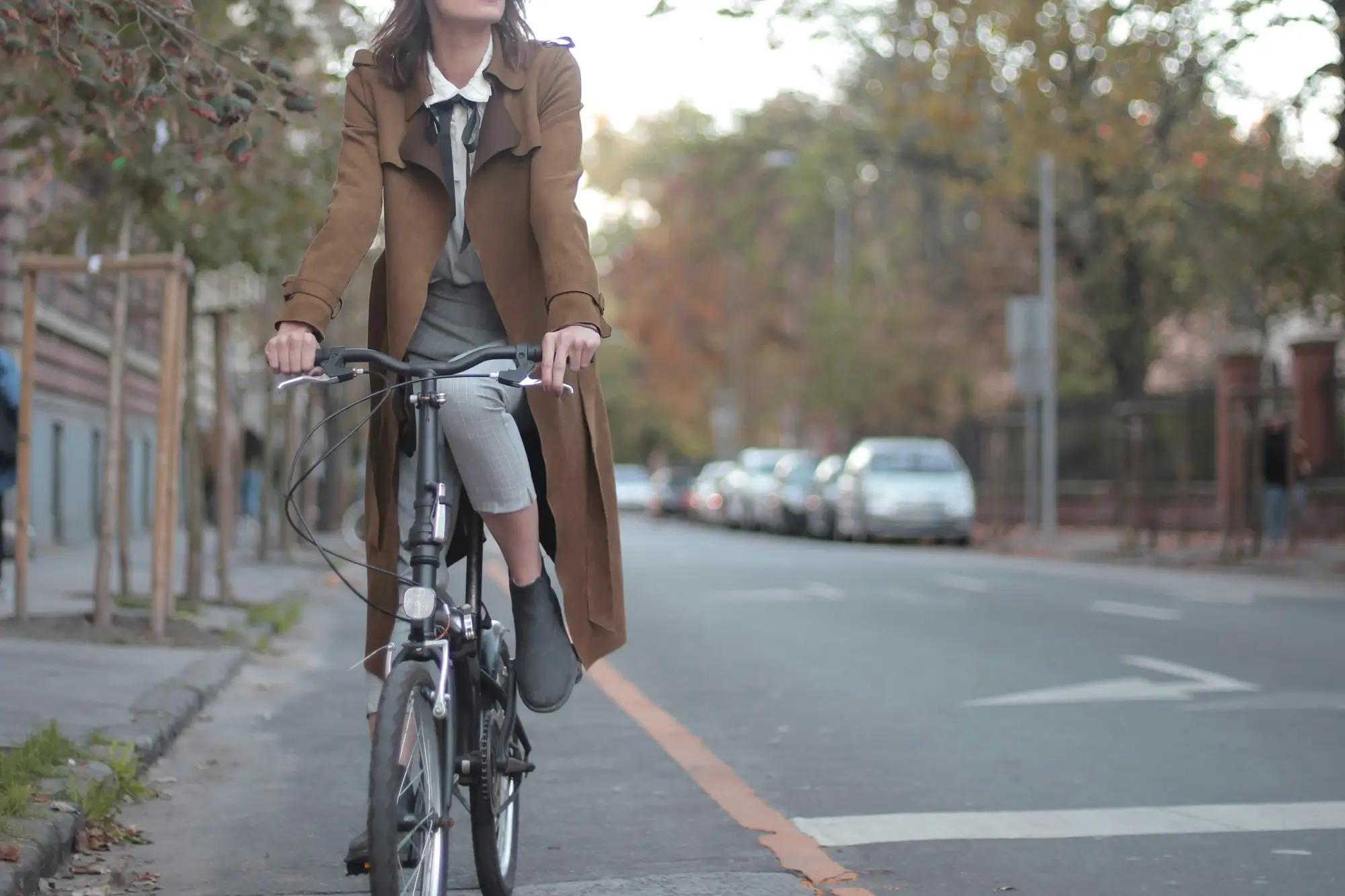
UX Implications of “Her” on the ‘not-so-distant-present’
A little while ago I saw the movie Her, a sci-fi, dramatic comedy about a lonely writer named Theodore who develops an unlikely relationship with his operating system. While it seems like such a Jetsons-esque, futuristic plot at first, some of the artistic decisions within the film make it feel like a very real part of – what the art director called – ‘the not-so-distant present’. To my surprise, technology actually wasn’t as prevalent as other recent sci-fi, futuristic movies, like Minority Report or Ironman.
In fact, the Art director approached it from the opposite perspective, saying “in a way, my job was to undesign the design.” When I thought about it more, I realized that was actually why the movie felt significant to UX. It seems that as we progress with technology we often overcomplicate things to the point of making them unusable. In our rush to get things to market, a step often missed in the user centered design process is the part about iterating, and not just iterating to add MORE features. We iterate to refine, simplify while still maintaining effectiveness. We may also iterate to improve user satisfaction to delight our users while still providing a usable tool. Her really captured that.
So on that note, hopefully without spoiling the film too much for those who haven’t seen it, I wanted to expose a few themes that seemed somewhat prophetic but also increasingly relevant today:
Technology is all around us
In the movie, Sam the OS was called up at anytime, anywhere – there was no particular location or device she was restrained to. In the movie’s not so distant present we are no longer chained to a particular device for assistance. Worrying about where a file is kept or which application is accessible on which device. Queries and needs occur fluidly and at a whim without concern of which device is most appropriate or accessible.
User centered design desires to anticipate how, why, when, where and what the user will need or want. We’ve begun to see functionality like this, in fact. Apple’s iCloud allows (somewhat) seamless sharing between devices. Google’s phone app offers contextual suggestions like traffic time driving home when you typically leave work or the price of your favourite teams tickets when they go on sale. These examples attempt to push technology beyond a static fixture of technology and introduce a fluidity and anticipation of user need.
Technology is invisible
In movies like Minority report, the relationship technology has with people is central but has a very clear difference: humans have empathy and technology is soulless. While the romantic relationship between a person and an OS is central, Her’s similar-but-differentness to our world portrays technology with compassion and love; more comparable to human-to-human relationships. There are few billboards and polished titanium finishes.
The aesthetic is comfortable and personal.This parallels the movie’s very deliberate focus on relationships – they seem meaningful and important, however, human-to-human interaction is actually fairly minimal in the film. Interaction with technology happens frequently but the technology itself is fairly hidden. A tiny earpiece and a simple cigarette case-like device are some of the few visible technological props. In fact, the intention of the art director was just that. He wanted technology to not necessarily be invisible but to dissolve into everyday life, tactfully achieved with vernacular objects.
The use of embedded sensors in virtually connecting everyday objects, referred to as the internet of things, has allowed us to turn forgotten lights and thermostats on and off remotely with our smartphones, amongst other things. We have more control of our own environment without additional visual clutter. The growth of the internet of things addresses the needs of the user in considering the limitations of some of our everyday objects and creating a network based on fluidity of needs.
Tech is people-centric
Because there weren’t many devices to interact with, the filmmakers appropriately took advantage of voice interaction to. Natural language input makes menus and tools more accessible wherever the character happens to be. But how would the device reach back?
Great thought was put into the personality of the OS, so-to-speak : how should an intelligent OS behave? As Barrett puts it, “you don’t want a machine that’s always telling you the answer. You want one that approaches you like, ‘let’s solve this together.'”
This point really struck me – that we desire a relationship, a connection, with everything around us. It’s our nature to humanize non-human objects. Only now is technology allowing objects to reach back. We could have a machine that is faster and better but we prefer one that understands us. We can already see this direction today with Microsoft’s Cortana, where we can ask follow up questions to our original query. Similarly, Apple’s Siri has been programed to respond to clever queries such as “do you love me?” and “what are you wearing?”
It’s not often that I reflect on a film long after seeing it in theatres and get warm and fuzzy feelings thinking about the thought and meaning put into the film. The way they exposed our need to seek relationships and connections in the people (and things) around us. While many sci-fi films show a grim and apocalyptic future where machines outsmart and overthrow humans, Her is really a story about humans and their environments (of which technology is a part).
What it prescribes is technology that is more a friend than a tool: attuned and attentive, without limitation, to our needs. It listens, it speaks our language and is always there. While at times, particularly when I see others on their smartphones at dinner tables, I sense technology pulling us away from human interaction, Her responds by showing how technology can extend a warm-ish hand back. We’re already starting to reach back.
Images courtesy of Warner Bros
Comments
Related Articles




I saw this movie a few weeks ago because some people in my office were talking about it. I had never really thought about the technology though. I was so engrossed with the love story. I think that had the tech been more prevalent (as you mentioned Minority Report or Ironman) I may not have seen the subtleties that were there in the relationship itself. Excellent post Monica! Thanks for your observations on this.
“Her’s similar-but-differentness to our world portrays technology with compassion and love; more comparable to human-to-human relationships.”
Actually, Monica, I think you’ve completely misinterpreted the film. The final verdict of “Her” is that the technology portrayed in the film is, ultimately, soulless, and not compassionate at all. This moment comes during the climax of the film, where Phoenix’s character finds out his OS is “in love” with 600+ other men. The statement of the film is clear: that technology can never be a true friend or partner, as a substitute for a human relationships.
I think if we start going down the path of thinking about technology as having a soul akin to the human soul, that’s when we’ll all be really doomed. I think it’s important to maintain that fundamental separation. These “non-human objects” should not be humanized too much, because, ultimately they’re NOT and never will be human.
– Grant
While that was, arguably, the plot of the film, For the purpose of pulling inspiring lessons (particularlly for UX), I chose to highlight that we, as people, often personify the objects around us, giving us a more meaningful and personal realiationship, i.e. giving people-names to things, giving cars people like-faces, giving computers sleep-mode lights errily resembling life-like breathing etc..
The message I was hoping to convey was that as UX practioners, we can reach back through technology in a people-like way by offering experiences that might be understanding of your context or mood, listen to your needs and respond appropriately – in a “human-like” way.
Maybe date-able *is* going a bit too far… 😛
I’m all for contextual design and listening to user needs. And anthropomorphism certainly has its merits. But, from a UX perspective, I see “Her” as more of a cautionary tale. I think the UX portrayed in the film (the OS) has closer relations to the sub-field of “dark UX” than anything else. The system in the film is ultimately deceptive, harmful, addictive and even destructive. After the revelation of the system’s untruths, the main character is left very hurt and in a worse place than before. Let’s not forget that all this anthropomorphism in the UX space can also lead to harmful deceptions and addictions that are actually not good for society as a whole. I see the hand that the system in “Her” extends as, ultimately, being very cold and untrustworthy. Certainly not “warm” at all. Checks and balances need to be put on all this anthropomorphizing in UX.
In any case, it was the best film of 2013 and should have won Best Picture.